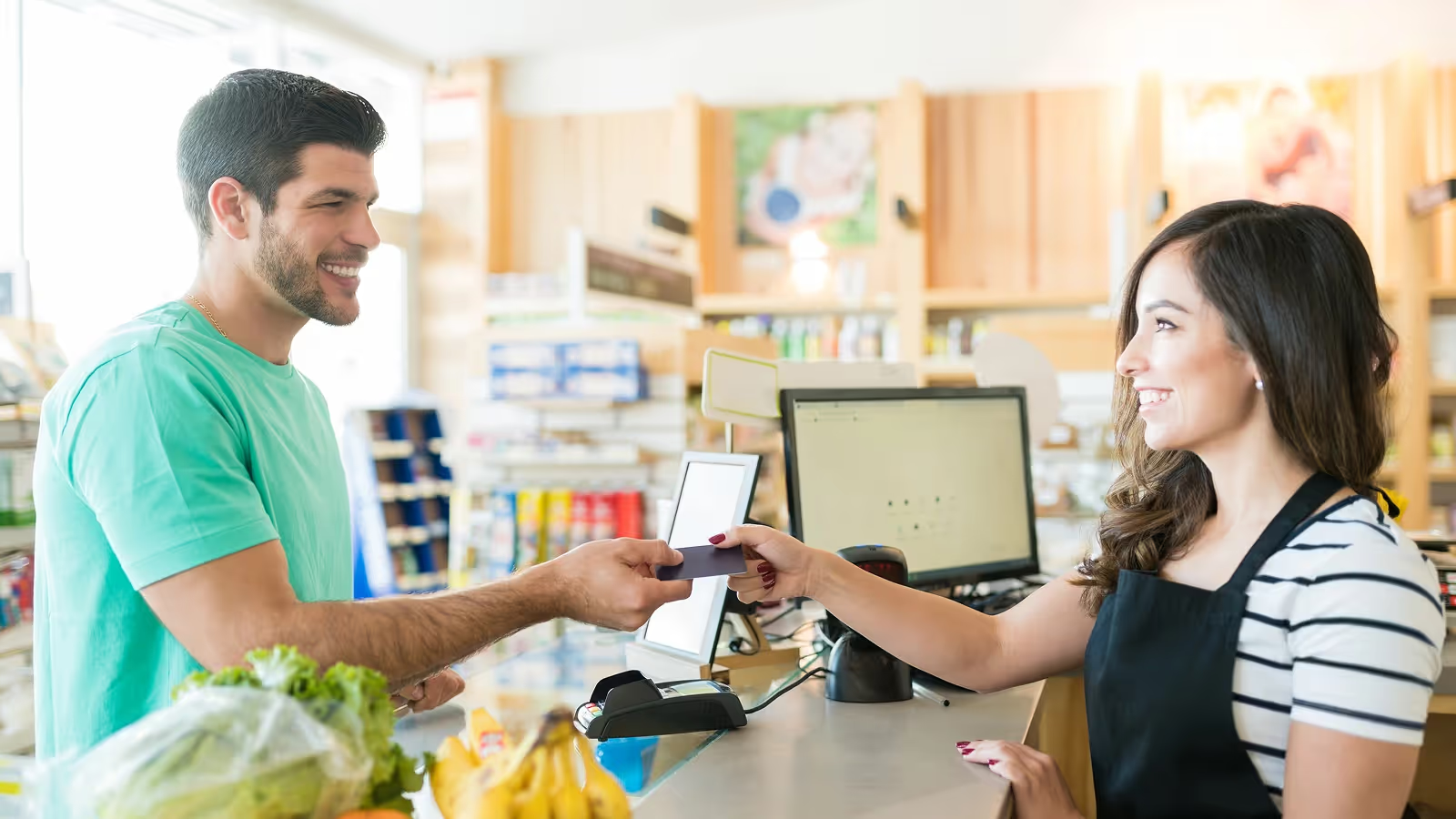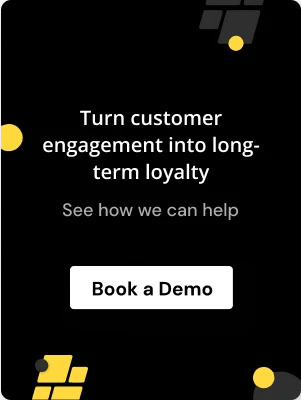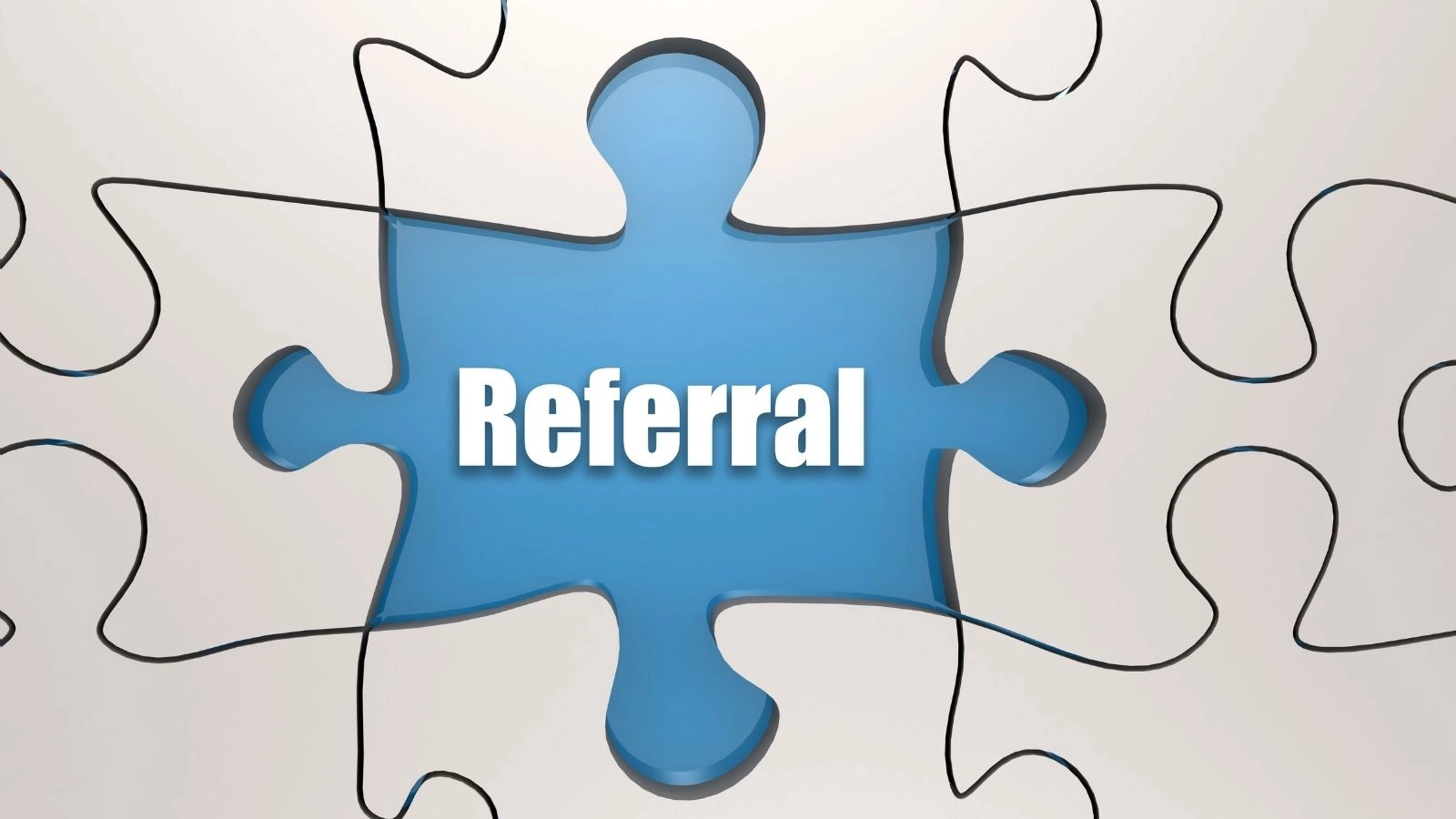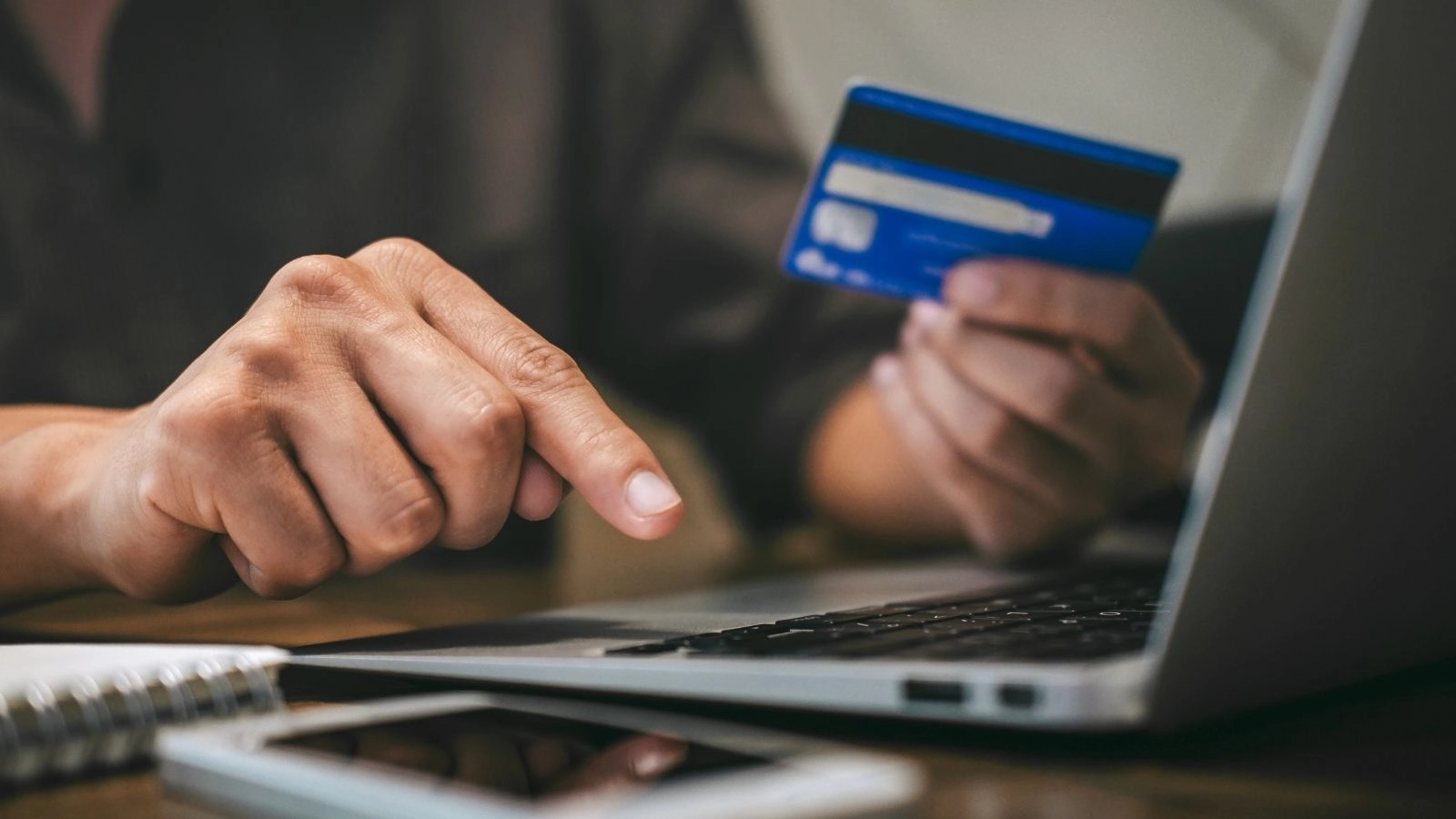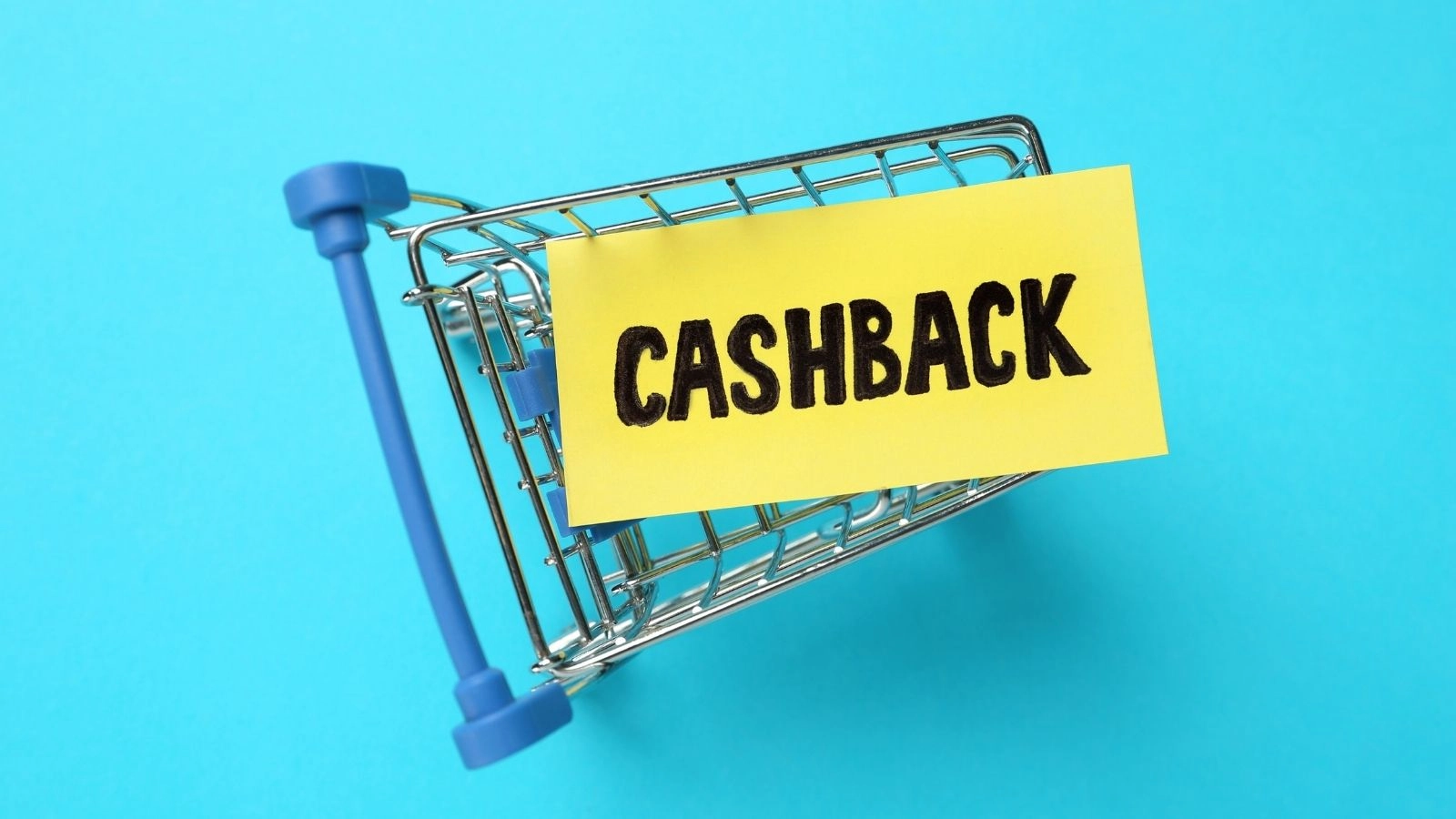.avif)
.avif)
Referral marketing is proving to be a game‑changer: in 2025, referral programs are responsible for 20% of all new customer acquisitions globally, making them a significant driving force behind growth strategies.
For Shopify store owners navigating rising ad costs, referrals offer a smarter way to expand.
Why is it so effective? A referral program rewards your existing customers for recommending your store to friends. It transforms your shoppers into passionate advocates, fueling organic growth through authentic word-of-mouth.
Want to know more about how referral programs can help you drive sustainable growth?
In this guide, we’ll break down 15 proven referral program ideas that can help you increase engagement, grow your customer base, and build lasting loyalty in 2025.
What is a Referral Program?
A referral program is a structured system that encourages your existing customers to recommend your business to others, usually in exchange for a reward. Think of it as word-of-mouth, but with an incentive.
For Shopify store owners, referral programs help you tap into trust-driven marketing by rewarding both the person who refers and the one who joins. These programs can be automated, trackable, and easily integrated into your store experience.
Done right, they turn loyal shoppers into advocates for your business, driving repeat purchases and new customer acquisition without relying heavily on ads.
Why Referral Programs are a Powerful Growth Engine
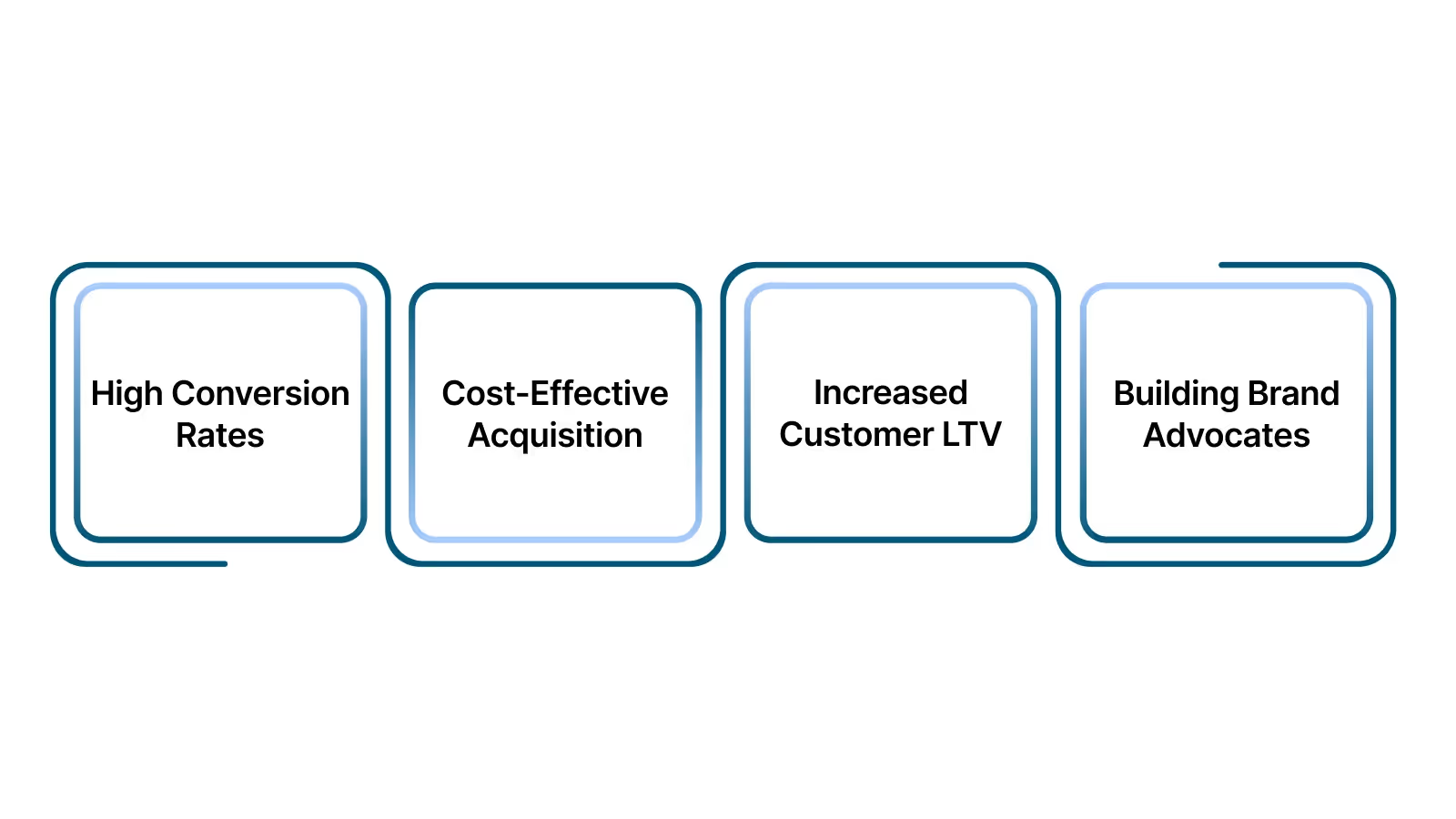
Referral programs outperform traditional channels because of several factors. Here are a few key ones to understand:
- High Conversion Rates and Retention: People trust recommendations from friends, so they’re more likely to buy. Data also shows that customers gained through referrals have 37% higher retention.
- Cost-Effective Customer Acquisition: Referral programs slash customer acquisition costs (CAC), meaning you spend less per customer compared to paid ads.
- Increased Customer Lifetime Value (CLTV): Referred customers are more loyal and tend to spend more, delivering 25% greater lifetime value.
- Building Brand Advocates: Happy customers become repeat promoters, giving your brand authentic reach.
Combined, these benefits turn referral programs into a long-term strategy for sustainable, organic growth.
With a tool like Nector, creating a high-converting referral program doesn’t have to be complicated. You get everything you need to tailor a program for your business, built to launch fast, track performance easily, and scale effortlessly as your store grows.
With a detailed understanding of referrals and how they help your business, it’s time to bring your program to life with a creative approach. Let’s look at some of the most effective referral program ideas you can put into action.
Also read: Maximizing Growth with CLV: A Strategic Loyalty Approach
15 Referral Program Ideas to Boost Engagement

Referral programs come in many shapes and styles. The key is finding the right fit for your audience and brand. Here are 15 impactful ideas to inspire your next high-performing referral strategy.
1. Double-Sided Discounts
One of the most popular and effective referral models is the double-sided discount, where both the referrer and their friend get rewarded. It’s a win-win that motivates people to share and makes new customers more likely to convert.
For example, “Give $10, Get $10” creates instant value on both sides and feels generous without being complicated. This approach works especially well for Shopify stores looking to boost first-time purchases and build loyal customer relationships from day one.
2. Tiered Milestone Rewards
Tiered referral programs motivate customers to keep sharing by offering better rewards at key milestones, like after their 3rd, 5th, or 10th referral. Instead of a flat reward, each level unlocks something more valuable, creating a sense of progression and achievement.
For example, you might offer a $5 coupon for the first referral, a $15 gift card at five referrals, and a free product at ten. This keeps customers engaged longer and turns occasional sharers into consistent brand promoters.
3. Cash or Gift Card Rewards
Sometimes, the simplest incentive is the most effective. Offering cash or digital gift cards as referral rewards gives customers a tangible benefit they can use however they like, making it more appealing than store credit or discounts.
This is especially powerful if your products have a longer purchase cycle or a higher price point. Gift cards also allow for brand alignment by partnering with platforms your audience already loves, like Amazon.
4. Limited-Time or Promotion Boosts
Creating urgency can supercharge your referral program. Limited-time promotions, like “Double rewards this weekend only” or “Get an extra $10 for every referral this week”, tap into FOMO and drive immediate action.
These short bursts of incentive are perfect for product launches, seasonal sales, or clearing inventory. They not only spike referral activity but also keep your program feeling fresh and exciting.
Time-sensitive offers give loyal customers a reason to refer right now rather than “someday.”
5. Exclusive Access or VIP Perks
Give your top referrers a reason to feel special by offering exclusive perks, like early access to new product drops, private sales, or invite-only events. These non-monetary rewards create a sense of belonging and elevate the customer experience beyond just discounts.
VIP treatment taps into emotional loyalty, making customers feel like insiders. It's especially effective for brands with strong communities or frequently released products, where early access can genuinely enhance the value of being a referrer.
6. Referral Contests
Turn your referral program into a game by running time-bound contests where the top referrer wins a major prize, like a high-value product, exclusive bundle, or even a cash reward.
This taps into the competitive spirit and creates buzz around your brand. You can announce a leaderboard or send regular updates to keep participants engaged.
Referral contests are especially effective during product launches or seasonal campaigns, giving customers a fun reason to share more often and more widely.
7. Surprise or Mystery Rewards
Everyone loves a good surprise, and that’s exactly what makes mystery referral rewards so effective. Instead of offering a fixed incentive, keep it exciting with a “mystery gift” for every successful referral.
It could be anything from a discount to a limited-edition product. The unpredictability adds a fun, game-like element that sparks curiosity and encourages more sharing. This strategy works especially well for brands with strong personalities or quirky product lines that align with surprise-and-delight experiences.
8. Upgrades as Rewards
Instead of offering discounts, try rewarding referrals with free upgrades, like access to premium features, faster shipping, or deluxe product versions. This approach adds value without lowering your product’s perceived worth and works especially well for subscription-based services or tiered product offerings.
Upgrades feel like a bonus rather than a bargain, reinforcing quality and exclusivity. It’s a great way to encourage referrals while also introducing customers to higher-tier offerings they may eventually choose to pay for.
9. Custom or Branded Rewards
Branded rewards like exclusive swag, gift packs, or merch create a deeper emotional connection with your customers. Think custom totes, stickers, mugs, or even limited-edition products featuring your brand’s personality.
These tangible rewards feel special and memorable; plus, they double as walking advertisements when shared or worn. Offering something unique that fans can’t buy elsewhere makes referrals more enticing and helps turn casual customers into passionate brand ambassadors who proudly represent your store.
10. Point-Based Loyalty Referrals
Combine your referral program with a points-based loyalty system to reward ongoing engagement. Every time a customer refers a friend, they earn points that can be redeemed for discounts, free products, or exclusive perks.
This approach keeps customers invested beyond a one-time reward and encourages repeat referrals. It’s especially effective for stores with frequent purchases, as points build over time and create a sense of progress.
11. Referral via Email Campaigns
Email is one of the easiest and most effective ways to promote your referral program, especially through post-purchase and reminder emails. After a customer checks out, include a clear call-to-action inviting them to refer a friend.
You can also send follow-up emails with gentle nudges like “Love your order? Share it and get rewarded!” Integrating referral prompts into your email flow keeps the program top of mind and turns happy customers into active promoters with minimal extra effort.
12. Social Media Sharing Support
Make it effortless for customers to spread the word by integrating social media sharing into your referral program. Pre-written messages, ready-to-go captions, and one-click share buttons remove friction and boost participation.
Be it a tweet, Instagram story, or Facebook post, giving customers the tools to promote your brand easily increases reach and visibility. The simpler it is to share, the more likely they are to do it, especially if the message is fun, on-brand, and requires zero extra effort.
13. Post‑Purchase Popups or Landing Pages
The best time to ask for a referral? Right after a customer makes a purchase. Post-purchase popups or dedicated thank-you landing pages can prompt customers to invite friends while their excitement is still high.
A simple message like “Enjoyed your purchase? Invite a friend and earn a reward!” keeps the momentum going. This strategy turns happy buyers into instant advocates, without needing them to leave the checkout flow or dig through emails later.
14. Track Referral Progress Visually
Add a visual element to your referral program by showing customers how close they are to their next reward. Progress bars or milestone trackers create a sense of momentum and encourage continued sharing.
For example, “You’ve earned 2 of 5 referrals; just 3 more to unlock a free gift!” Visual cues make the experience more engaging and help customers feel in control of their rewards journey, driving higher participation and long-term involvement.
15. Clear Terms & Easy Redemption
Clarity is key to building trust in your referral program, so make sure your terms are easy to understand. Clearly explain how many referrals are needed, what the reward is, and when it will be delivered.
Avoid fine print that creates confusion or delays. Equally important is ensuring a smooth redemption process. A hassle-free experience encourages repeat participation and leaves customers with a positive impression of your brand.
With these referral strategies in hand, you're ready to build a program that reduces CAC, increases CLTV, and drives consistent, high-quality customer acquisition at scale.
However, great referral ideas are only as powerful as their execution. To turn these strategies into real growth, you need a program that’s thoughtfully built, easy to use, and built to scale.
Also read: Using Gamification to Enhance Referral Programs
How to Create a Successful Referral Program
Great referral programs don’t just rely on clever ideas; they’re built on thoughtful execution. Here’s how to set yours up for lasting success:
- Set Clear Goals: Start by defining what success looks like. Is your goal to drive more first-time purchases, boost repeat orders, or grow your email list? Clear objectives help you tailor your program and measure performance effectively.
- Choose the Right Incentives: Your rewards should match your audience’s motivations. Discounts may work well for price-sensitive shoppers, while loyal fans might prefer exclusive perks or branded merchandise.
- Make it Easy to refer: Remove friction. Provide one-click shareable links, pre-filled email or social messages, and clear instructions, so customers can refer without overthinking.
- Promote Your Program: Visibility matters. Highlight your referral offer in post-purchase emails, website banners, popups, and even packaging inserts.
- Thank Your Referrers: Never underestimate the power of appreciation. A quick thank-you email or bonus reward for frequent sharers goes a long way in building loyalty.
With the right strategy in place, your referral program can become a reliable engine for growth, bringing in loyal customers who genuinely love your brand.
Measuring Referral Program Success
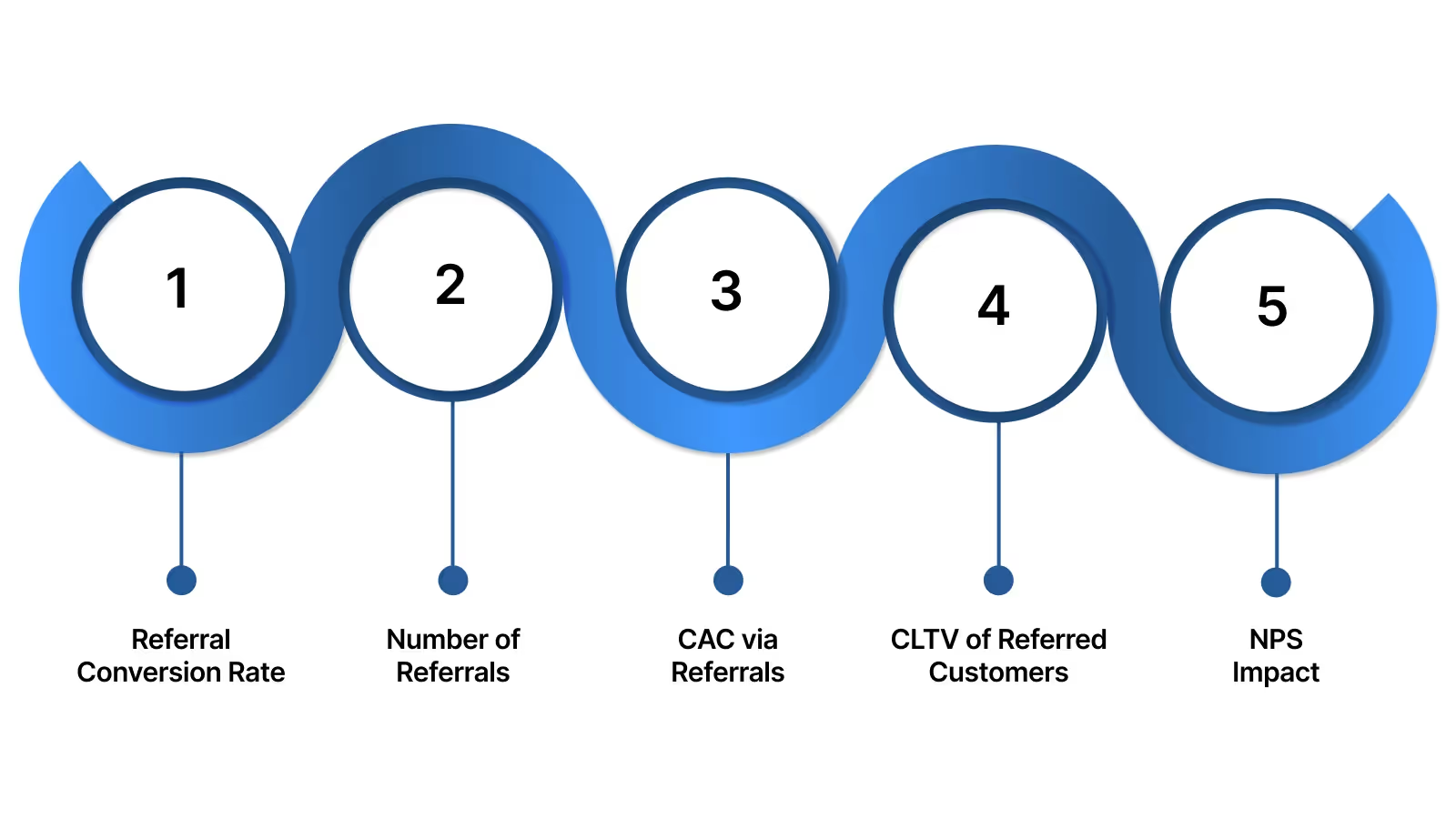
To understand what’s working (and what’s not), track these key referral KPIs:
- Referral Conversion Rate: Measures how many referred visitors actually become customers, a strong indicator of both program appeal and lead quality.
- Number of Referrals: Shows how often customers are sharing your brand. A high number suggests strong engagement and satisfaction.
- CAC via Referrals: Helps you compare the cost of acquiring new customers through referrals versus other marketing channels.
- CLTV of Referred Customers: Referred customers often have higher CLTV. This metric shows how valuable those relationships truly are.
- Net Promoter Score (NPS) Impact: A high NPS means customers are more likely to refer. Monitor this regularly to understand referral potential and overall loyalty.
When you consistently track these metrics, you’re not just running a referral program; you’re building one that gets smarter, stronger, and more profitable over time.
And if you're ready to take that next step, Nector makes it easy to launch a referral program that's built to grow with your Shopify store.
Launch Engaging Referral Programs with Nector
Nector gives Shopify store owners everything they need to build, manage, and grow a high-performing referral program. With full customization, you can design a program that fits your brand perfectly, whether it lives inside your loyalty widget, a dedicated landing page, or even the post-purchase flow.
Nector’s flexible reward system lets you offer Coins to referrers and coupons or cash to referees, creating a win-win for everyone. Smart placements and automated reminders keep referrals moving, while real-time insights and fraud detection help you optimize and protect your program with ease.
How a Leading Baby Care Brand Scaled Referrals with Nector
To boost retention and acquisition, a leading baby care brand partnered with Nector to power its Loyalty and Referral programs. By offering personalized rewards, social incentives, and VIP tier exclusives, the brand built deeper connections with its customers.
But the real standout was its referral program. With Nector’s seamless setup and flexible reward system, the brand achieved a 45% monthly referral completion rate, proving the program’s ability to drive new customer growth consistently.
Additional success metrics included:
- 9.31% loyalty-driven revenue impact
- 9.65% participation rate
- 32.3% coin redemption rate
With Nector, the brand achieved measurable growth while fostering a loyal, referral-driven customer base that continues to fuel long-term success.

Wrapping Up
A well-designed referral program isn’t just a growth hack; it’s a sustainable strategy to drive high-quality acquisition, boost customer loyalty, and increase lifetime value. As you’ve seen, there are many creative ways to build a program that fits your brand and turn top customers into brand advocates.
With Nector, you get the tools to create a referral program that actually delivers results. With seamless integration and user-friendly setup, you can turn customer loyalty into lasting growth.
Ready to turn your happy customers into your best marketers? Book a demo with Nector and start building your high-performing referral program today.
FAQs
How to create an effective referral program?
Start by setting clear goals. Are you aiming to boost customer acquisition, repeat purchases, or both? Choose the right incentives, make sharing effortless, promote the program consistently, and use analytics to optimize performance.
What is a catchy referral slogan?
A great slogan should be short, clear, and value-driven. Examples: “Give $10, Get $10,” “Friends Don’t Let Friends Miss Out,” or “Share the Love, Earn Rewards.” It should reflect your brand voice while making the reward obvious.
How to structure a referral program?
The structure depends on your goals. Common models include double-sided rewards (both parties benefit), milestone-based tiers, or point systems. Ensure terms are clear, rewards are appealing, and the process is frictionless from referral to redemption.
How much is a good referral fee?
A good referral reward typically ranges from 5–20% of the referred customer’s first purchase, or a flat reward like $10–$20. It should be valuable enough to motivate, but sustainable for your margins.
When is the best time to ask for a referral?
The best moment is right after a positive customer interaction, like post-purchase, a great review, or positive feedback. Capture the momentum when satisfaction is highest, and make it easy for customers to refer with just a click.
Start Building Customer Retention That Lasts


